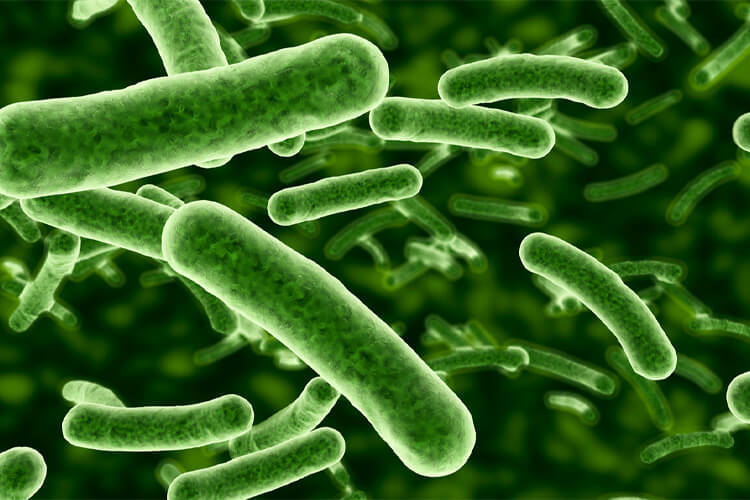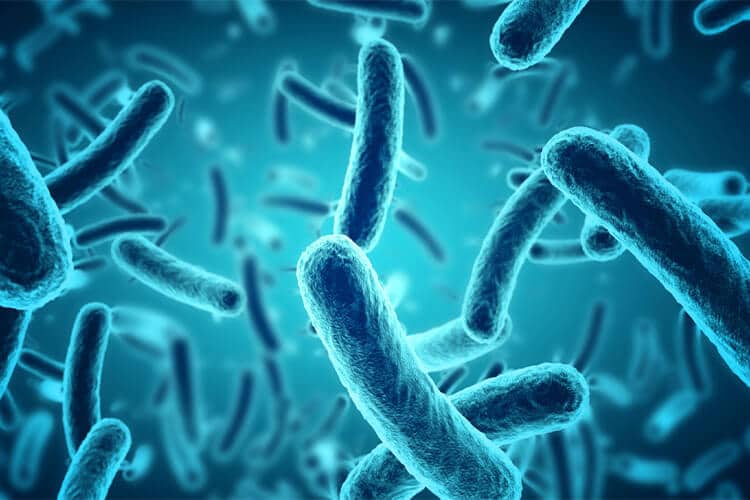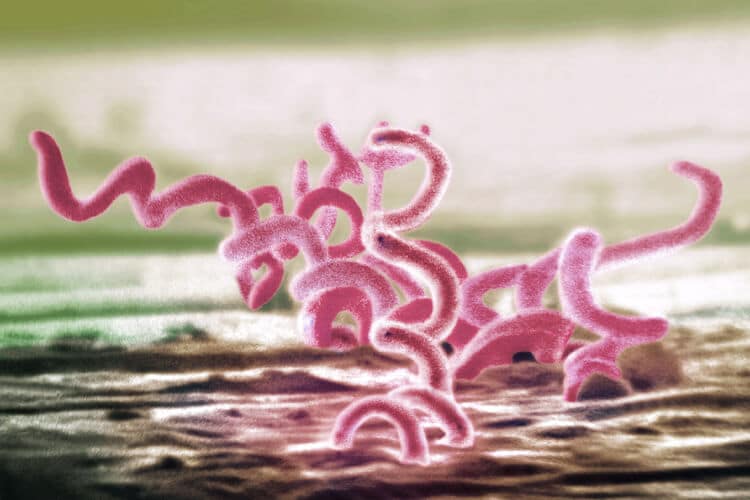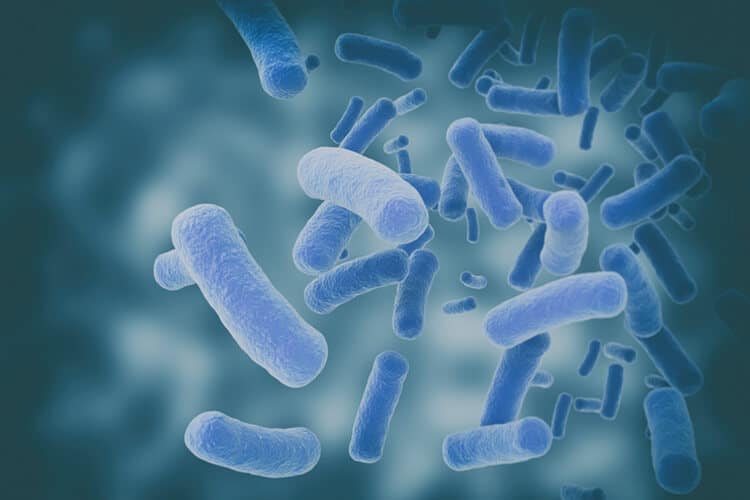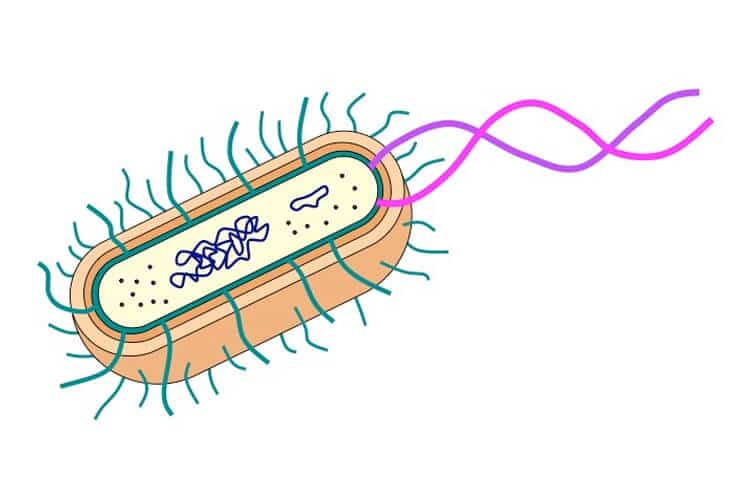Bacteria is a single-celled microorganism and is the most common and well-known species of prokaryotic organisms that make up the kingdom of monera. There are bacteria almost everywhere in the world. They live mostly in places where there is organic waste and in waters. From +80-degree hot springs, even in -90-degree glaciers, these species are found. They exist everywhere you can think of, in the soil, in the depths of the oceans, in the skin, in the intestines, in hot springs. They can be transported great distances through air and water droplets.
General Characteristics of Bacteria
- Bacteria are single-celled microscopic organisms.
- Some species cause disease in animal and plant organisms. They are saprophytes or microscopic creatures.
- Bacteria have cell nuclei, but they have some differences that distinguish them from higher organisms.
- Bacteria divide and multiply, forming two cells from a single cell.
- Cells can be round shaped, comma shaped, spiral shaped or rod shaped. Some form clusters in the form of chain cells, and each cell maintains its vitality separately.
- Some bacteria have flagella and can move.
- Each bacterium has a specific and special shape of its cell in its nutrient media and under certain conditions. These special shapes are taken into account in the classification of bacteria.
Sizes of Bacteria
Bacteria can only be seen and measured under a microscope. Bacteria sizes can vary depending on the development period, the composition of the medium and the environmental conditions. They are homogeneous in size during the breeding period. During the stopping and dying periods, it is larger, pleomorphic, etc. sizes. Bacteria size: Genome size can be evaluated in kilobases (kbp) and molecular weight in daltons (da).
Morphological (Structural) Characteristics of Bacteria
Bacteria are classified on the basis of their microscopic appearance: Spiral-shaped bacteria (Spirals), round-shaped bacteria (Cocci), rod-shaped bacteria (Bacilli). Pleomorphic bacteria, on the other hand, some bacteria can form different morphological cells depending on physical and chemical factors, these are called pleomorphic bacteria.
1) Spiral-Shaped Bacteria – Spirochete (Spirochaete)
Helical-shaped bacteria are classified into 3 groups. Bacterial groups in the form of short rods in the form of a comma are called Vibrio. Bacterial groups that are thin, spiral and bendable are called Spirochetes. Bacterial groups with a thick, spiral shape but not flexible are called Spirillum. Spirochetes are divided into 3 genera in terms of shape, size and reproductive characteristics. These:
- borrelia
- treponema
- leptospira
It is sorted as.
2) Round Shaped Bacteria – Coke (Coc)
This bacterium is called cocci. Cell division can occur in one direction, in two or three directions perpendicular to each other, or in different directions. Being in one direction means: Two sister cells remain connected to each other and this is called a diplococcus. If they form a chain, they are called streptococci.
In two directions, it consists of quaternary cocci and these are called tetracocci. If the cell is divided regularly in three directions, groups of eight are formed in the form of a package and these are called sarsina. If the cells divide irregularly and in various directions, and the newly formed cells remain attached to each other, they are called staphylococci.
3) Rod Bacteria – Bacilli
Rod-shaped bacterial groups are straight or slightly curved rod-shaped bacteria. Their length and width can be of different sizes. Bacteria with short stature are in a coccoid shape close to their width. Tall rods can be as long as twenty times their width. Single stick bacteria are called bacilli. Stick bacteria that are oval and cocci are called coccobacillus. The chain-forming rod bacteria are called streptobacilli.
4) Bacteria Species in Pleomorphic Form
Groups with different structural features under certain conditions are called pleomorphic bacteria. These bacterial groups are divided into three groups within themselves.
- Bacteria in the form of pleuro pneumonia like organism (PPLO). These bacteria, which cause some diseases in humans and animals, do not have cell walls of mycoplasmas. There are star and ring shapes.
- L-form bacteria. If they are produced in environments containing chemical substances, these chemicals prevent cell wall synthesis and form forms that do not have a cell wall. Disc, oval, star etc. These structures that show forms are called L-forms. Environmental factors pH change, oxygen depletion, osmotic pressure. These are factors such as changes and the reduction of foodstuffs in the environment.
- Involutional forms. As a result of the changes in the properties of the media in which they are produced, changes occur in their structures. They return to their normal form when conditions are optimal.
Macroscopic Bacterial Morphologies
If a bacterium is grown in solid media and under suitable conditions, it forms a visible mass. These clumps of bacteria are called colonies. Bacteria formation processes vary. Some occur in 24 hours, while others occur in 4-5 days. Human or animal microbacteria, on the other hand, become large colonies in 15-20 days.
Smooth (S) colony: Bacterial colonies that are round, smooth, fluffy, shiny and homogeneous on solid media. Colonies formed by newly isolated bacteria from disease cases.
Rough (R) colony: Bacterial colonies with rough, matte and granular structure on solid media. They are colonies formed by bacteria that have become obsolete or have been passaged several times.
Mucoid (M) colony: These colonies are bacterial colonies with a sticky structure that elongate like a thread when touched to the core. It is formed by bacteria that produce mucoid secretion.
L colony: Bacterial colonies with irregular top and edges and granular form. It is produced by PPLO bacteria and L-form bacteria groups. Microorganisms that do not form cell walls form L colonies.
Anatomical Structure of Bacteria
Anatomical structures are divided into external and internal structures. External structure: Cell wall, flagella, pili and capsule. In its internal structure: Spore, cytoplasmic membrane, mesosome, ribosome, nucleus, pigment etc. buildings.
The bacterial cell wall can only be seen with an electron microscope. It is stained with some special staining techniques and seen in different colors under the microscope. After staining with Gram staining technique, bacteria are divided into groups according to the color they show.
They are called Gram positive (Gr+) bacteria and Gram negative (Gr-) bacteria. Gram-positive bacteria appear blue-violet under the microscope. Gram-negative bacteria, on the other hand, appear pink under the microscope. The reason for the color differences is due to some differences in the cell walls of the bacteria.
The bacterial cell wall protects the bacterium against physical and chemical external influences and other foreign organisms. The cell wall has an effective role in bacterial division and proliferation. In addition, by acting as a filter, it takes water, organic and inorganic substances from outside and throws out substances such as metabolism wastes.
History of Bacteria
He entered the world of microscopic living things, starting with a magnifying instrument of his own design, consisting of a biconvex lens placed between two metals, in 1676 by a Dutch merchant, Antonie van Leeuwenhoek (1632-1723). Because of these studies he has been called as the founder of microbiology.
In 1676, he found the first bacteria and drew them by following their shapes and movements. He sent these more than two hundred letters to the Philosophical Transaction of the Royal Society in London. His research is in polluted water, soaked rain water, tooth dirt, fungus, leaves, urine and stool, etc. he did.
He also wrote in his notes that bacteria die when they are kept at high temperatures or interacted with vinegar. He first named it animal (animaculate). The name of the bacteria was given by Christian Gottfried Ehrenberg in 1838.

